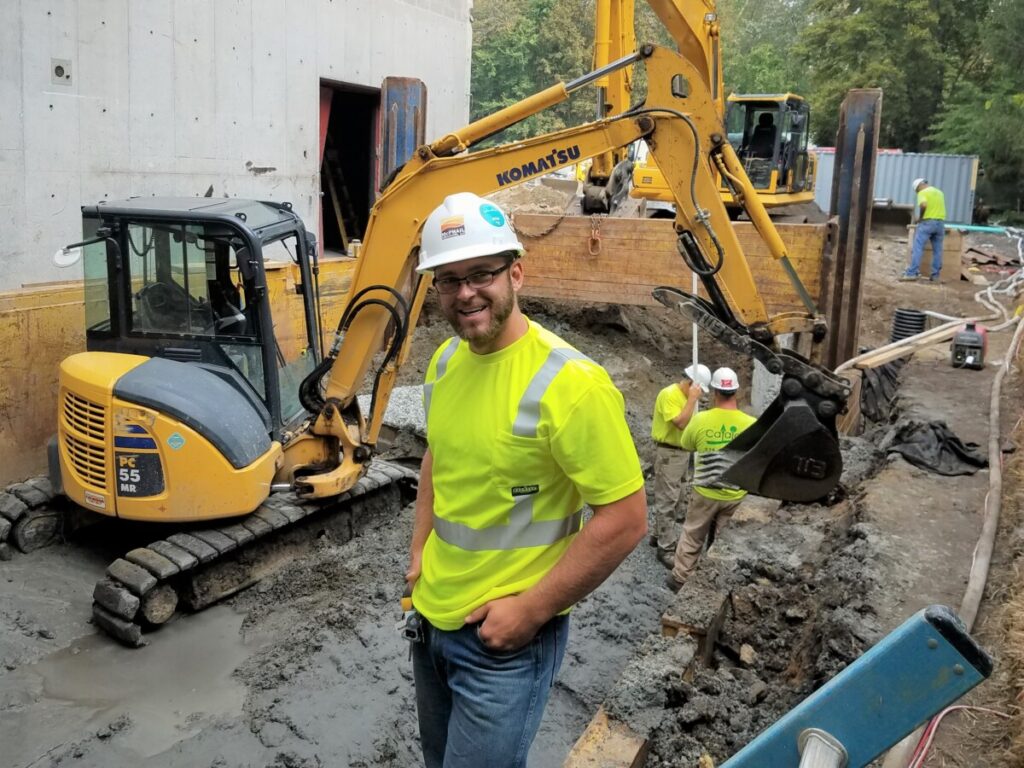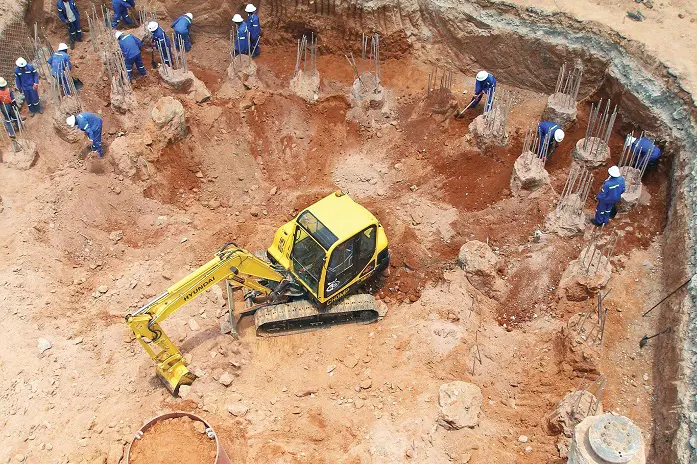A Detailed Summary of the Secret Responsibilities of Geotechnical Engineers in Website Characterization and Ground Renovation Methods for Engineering Solutions
Geotechnical engineers are integral to the successful implementation of engineering jobs, entrusted with the vital duties of site characterization and the application of ground renovation techniques. Their work includes an extensive evaluation of subsurface problems, employing various screening techniques to determine soil and rock residential properties. This fundamental knowledge not only educates layout decisions but additionally alleviates potential threats associated with ground instability. As we explore the diverse functions of these experts, it becomes obvious exactly how their proficiency shapes the security and performance of design options. What certain methods and evaluations stand apart in this essential self-control?
Role of Geotechnical Designers
Geotechnical designers play a crucial function in the design and construction of infrastructure by assessing the actions of soil and rock below the surface - geo tech engineering. Their obligations incorporate assessing subsurface problems to inform design choices that make certain structural stability and security. By conducting thorough analyses of soil residential or commercial properties, including shear permeability, toughness, and compressibility, geotechnical designers supply crucial information that influences the selection of ideal building products and techniques
In enhancement to analyzing dirt auto mechanics, geotechnical designers are tasked with determining possible risks such as landslides, sinkholes, and ground settlements. Their expertise assists minimize risks connected with these geotechnical sensations, consequently securing both the setting and public safety. They also team up carefully with various other design disciplines, guaranteeing that geotechnical factors to consider are integrated into overall project design.
Moreover, geotechnical designers participate in the assessment of existing structures, supplying referrals for retrofitting and repair services when necessary. Their extensive understanding of soil-structure interaction is vital for the growth of lasting framework remedies. On the whole, the function of geotechnical designers is essential to the successful awareness of building and construction projects, guaranteeing they are secure, durable, and compliant with regulative requirements.

Website Characterization Processes
Reliable website characterization processes are essential for recognizing the subsurface conditions that influence job design and execution. Geotechnical engineers employ an organized method to collect, assess, and translate data relating to soil, groundwater, and rock attributes. This procedure begins with a complete evaluation of existing literary works and historic site data, providing insights right into previous website conditions and possible challenges.

Information evaluation complies with fieldwork, where designers make use of geostatistical methods to translate findings and create geological designs. With diligent website characterization, geotechnical engineers lay the groundwork for successful job execution, minimizing unpredicted problems and optimizing resource allowance.
Dirt and Rock Screening Approaches
While understanding subsurface conditions is essential, the selection of appropriate soil and rock screening approaches is just as essential for precise evaluation and design. Geotechnical engineers employ a selection of testing techniques to assess the mechanical and physical residential or commercial properties of soil and rock products.
Lab examinations, such as Atterberg limitations, grain dimension evaluation, and unconfined compressive toughness examinations, supply important data on dirt actions under various dampness problems and filling circumstances. These tests assist determine dirt category and anticipate settlement or shear strength attributes vital for foundation design.
In-situ testing methods, consisting of Criterion Penetration Tests (SPT), Cone Penetration Tests (CPT), and stress meter tests, allow engineers to collect information straight from the ground. These methods offer beneficial insights into the soil's thickness, uniformity, and stratification without the need for extensive sampling.
Rock testing generally entails core tasting and lab analysis to assess homes like uniaxial compressive strength and rock high quality classification (RQD) With each other, these soil and rock screening methods make it possible for geotechnical designers to make educated choices concerning site-specific challenges, guaranteeing the safety and security and stability of design solutions.
Ground Enhancement Methods
Ground improvement methods are important for enhancing the design homes of dirt, thus increasing its load-bearing capability and minimizing negotiation. These techniques are vital in dealing with obstacles presented by bothersome or weak dirts, which can substantially influence the stability and toughness of structures.
Different ground renovation strategies are employed, including compaction, grouting, and dirt stablizing. Compaction includes increasing the density of soil with mechanical methods, which improves its shear stamina and lowers compressibility. Grouting, on the other hand, involves infusing a liquid product into the ground to load voids and improve dirt communication. This technique is especially reliable for treating loose sands or broken rock.
Dirt stablizing incorporates a range of techniques, from chemical additives to mechanical treatments, focused on boosting the dirt's resistance to disintegration and contortion. Methods such as lime stablizing or concrete blending change the homes of the dirt at a fragment level, enhancing its overall performance.
Importance of Geotechnical Assessments
Geotechnical index evaluations play a crucial duty in the preparation and design of design projects, as they give crucial info regarding my link the subsurface problems. Comprehending soil residential or commercial properties, rock developments, groundwater degrees, and prospective geohazards is essential for making certain the stability and safety of frameworks. These assessments make it possible for designers to make enlightened decisions pertaining to site selection, design criteria, and construction techniques.
The significance of geotechnical assessments extends past initial task stages; they contribute in danger monitoring and cost performance. By recognizing prospective concerns early, such as soil settlement, slope instability, or excessive groundwater, designers can design suitable reduction methods, decreasing the chance of architectural failings and costly delays. These analyses sustain compliance with governing demands and boost the sustainability of design techniques.

Verdict
To conclude, geotechnical engineers are crucial to guaranteeing the safety and security and stability of design projects via detailed site characterization and ground enhancement techniques. civil consulting engineers. Their organized method to analyzing subsurface conditions, incorporated with their recommendations for reliable ground modification, substantially over at this website enhances soil homes and load-bearing capacity. The knowledge of geotechnical designers not just facilitates educated project planning yet additionally makes sure compliance with guidelines and cultivates effective communication among stakeholders, eventually adding to effective design outcomes
Geotechnical engineers play an essential duty in the style and building and construction of infrastructure by analyzing the behavior of soil and rock beneath the surface. By conducting in-depth evaluations of dirt residential properties, including shear leaks in the structure, compressibility, and toughness, geotechnical designers give critical data that affects the choice of suitable building materials and techniques.
In addition to evaluating soil mechanics, geotechnical engineers are entrusted with identifying possible dangers such as landslides, sinkholes, and ground negotiations. Geotechnical engineers utilize a methodical technique to gather, evaluate, and analyze data relating to groundwater, rock, and soil qualities. By identifying possible concerns early, such as soil negotiation, slope instability, or excessive groundwater, designers can devise suitable mitigation approaches, minimizing the possibility of costly delays and architectural failings.